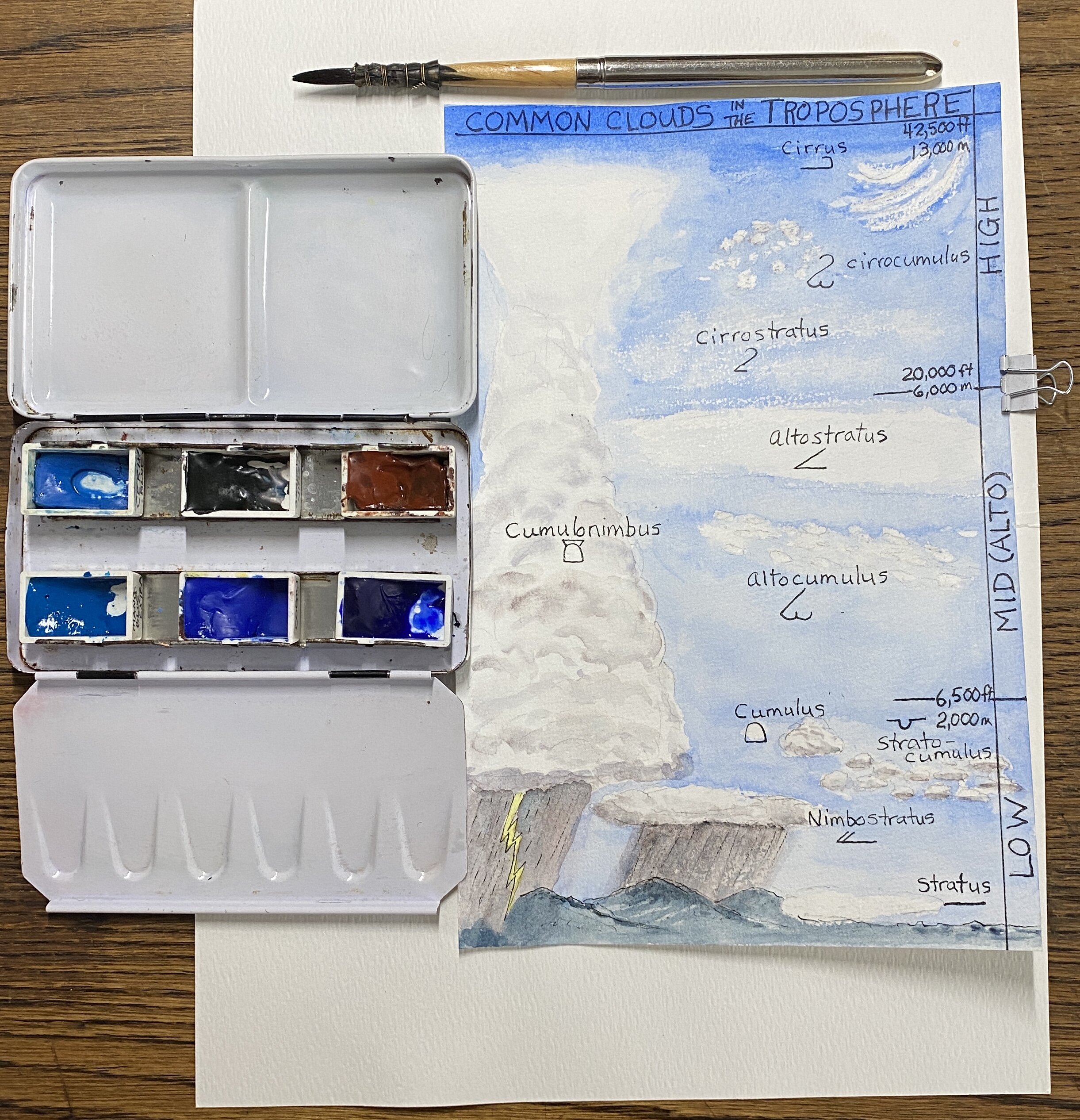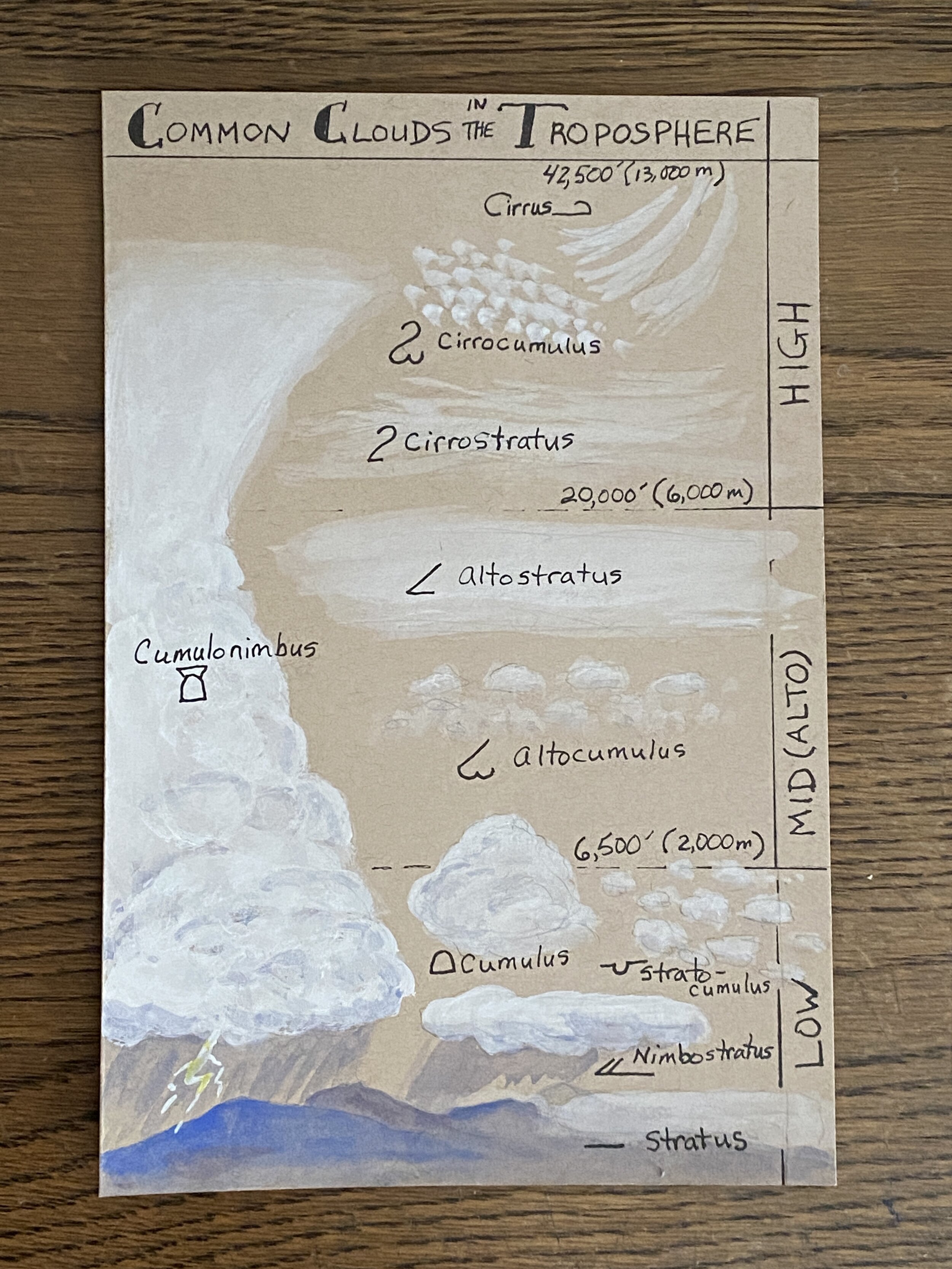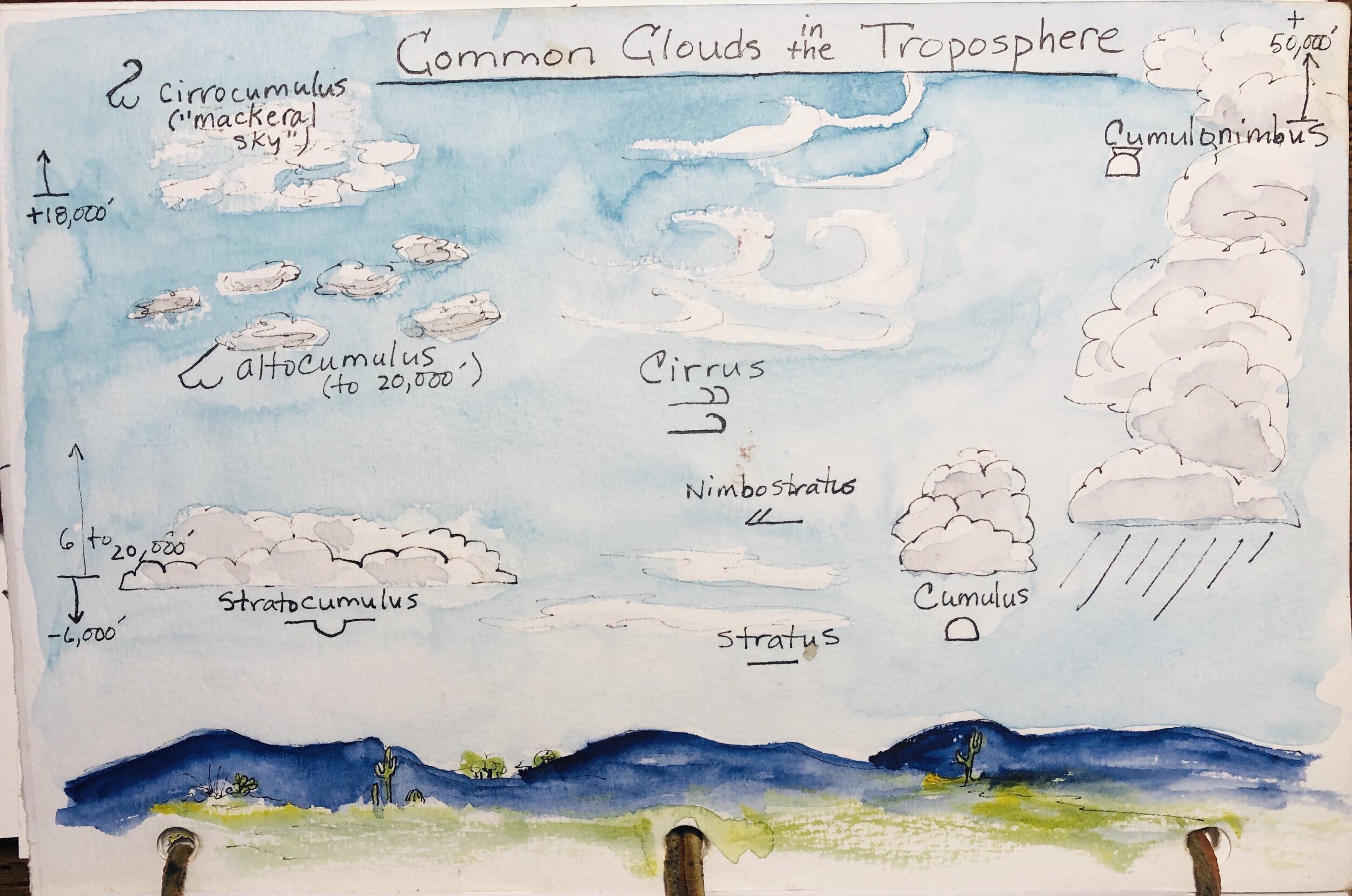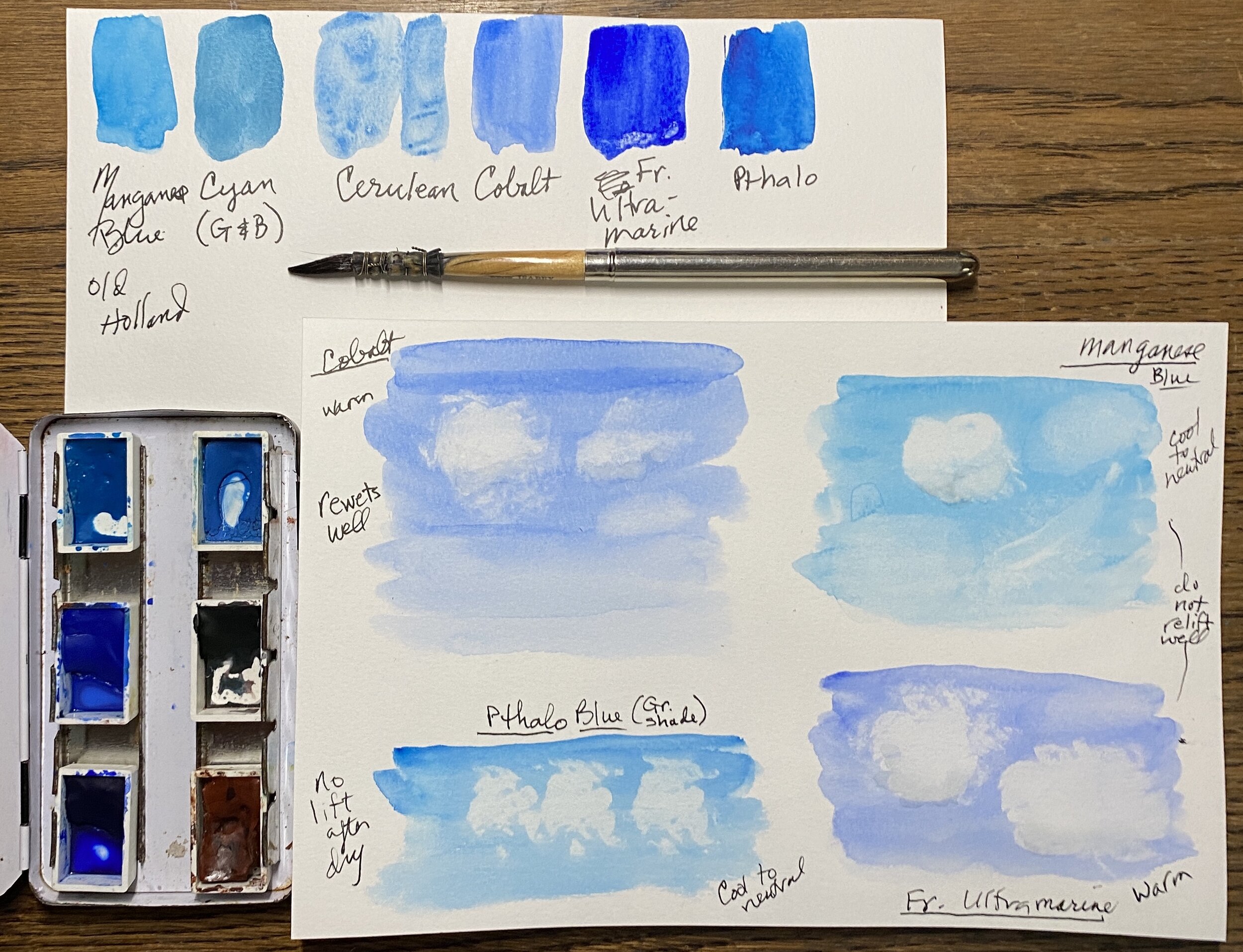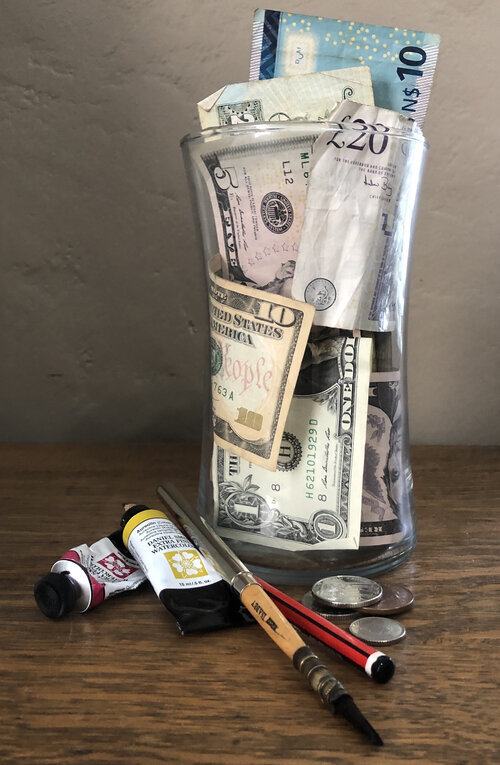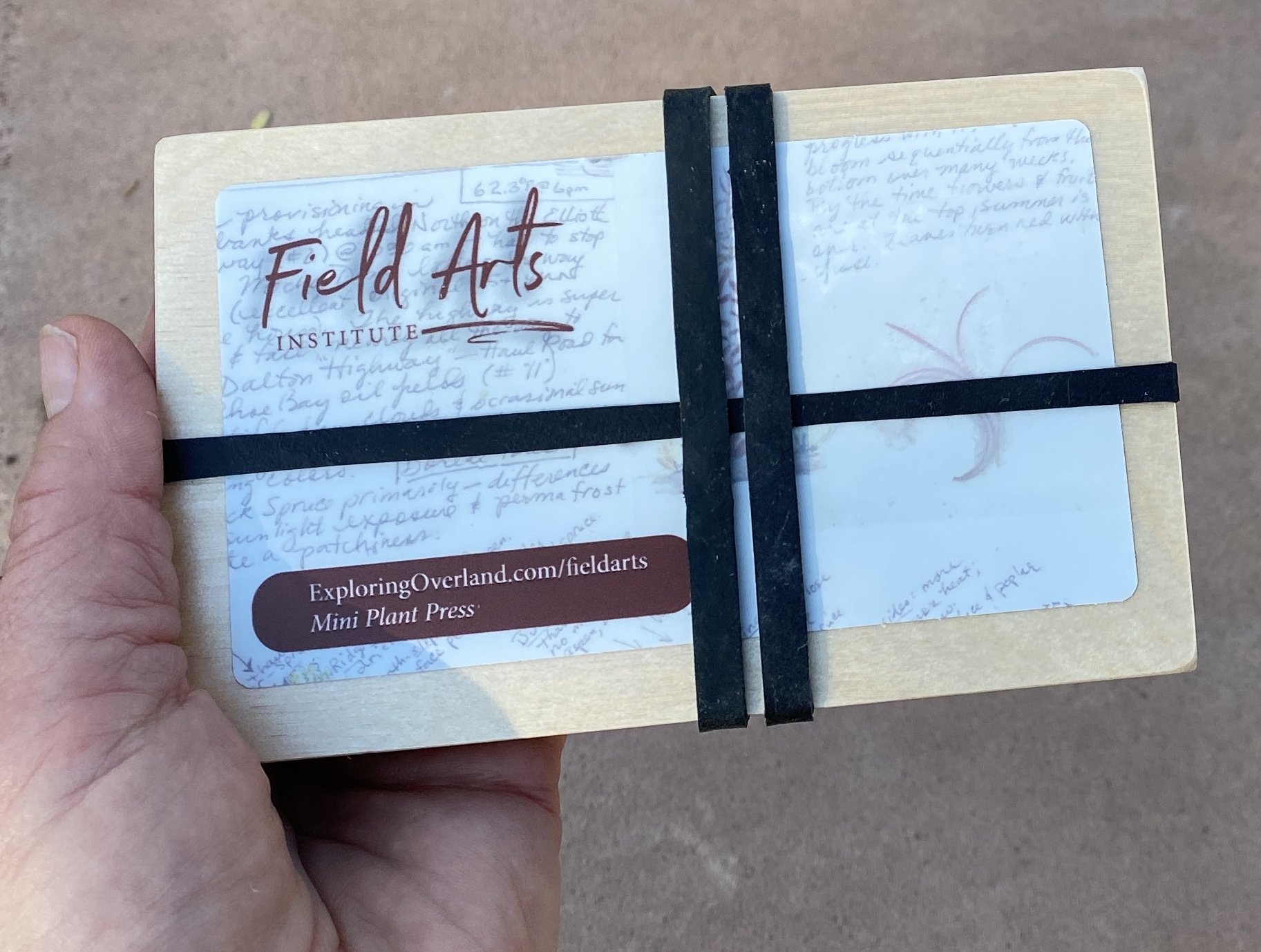Field Arts Workshop: Weather 101 for Field Notebooks
Creating a cloud ID chart is a great way to practice cloud-painting skills as well as to learn the main cloud types.
Metadata for your field notebooks is a crucial addition, to give your entries a solid foundation in context: date, time, sunrise / sunset, moon phase, and weather. Weather is fun to learn: What are the clouds? How do you ID them? How do you tell the wind speed? What are the symbols for recording weather?
In this free Field Arts tutorial, we will dive into learning about weather data, what is climate vs. weather, where weather forms and how, and how to ID clouds. Then we’ll create a cloud-chart that you can keep in your journal for future reference.
Length: 2 hours
Resources from the Workshop
pdf with all links and download link for images and ALL THE charts (CLICK IMAGE):
Click image to initiate download. Or, use: https://www.dropbox.com/sh/rvlzr0a9hezdgjr/AACw6pH9jwhj6sQ-rvmM_GGwa?dl=0
SUGGESTED PAINTS AND SUPPLIES:
Ruler and pencil
Pen with waterproof ink
And for the color, two approaches:
1) Traditional:
- watercolor paper (9x6 or larger), at least 90 pound
- cobalt or cerulean; these are pretty and wash easily, and also lift easily. French ultramarine is wonderful but does not lift as well and does granulate a little, so it will settle into the texture on your paper, which you may or may not like.
- burnt sienna to mix with your blue to create a nice gray for the clouds
- alternatively, shadow violet
OR
2) gouache:
- toned paper (dark grey or tan)
- gouache paint in white and blue and burnt sienna
I actually found the toned with white gouache to be much easier for this chart exercise!
You can find my list of minimalist colors and tips on color mixing here: https://www.exploringoverland.com/field-arts-tutorials-list/2020/7/5/minimalist-watercolor-for-nature-journaling
COLORS I DEMONSTRATED:
Manganese Blue (Old Holland)
Cyan (Greenleaf & Blueberry)
Cobalt (Daniel Smith)
Cerulean (Daniel Smith)
French Ultramarine (Daniel Smith)
Pthalo Blue (Green Shade, Daniel Smith)
Goache Set from Caran D’Ache (white, yellow, blue, red, burnt sienna)
This is the reference image for creating your own cloud chart for your journal.
